

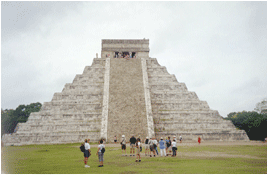 |
Chichén Itzá, located in central Yucatán, thrived approximately during the ninth and tenth centuries, and was the most important Postclassic Period Mayan city. It is not certain how long its hegemony lasted, but what it is certain is that it was the most powerful Mayan state and one of the great polities in all Mesoamerica. Its history is still clouded in mystery and there are many contradicting theories and legends. |
The Ball Court (Juego de Pelota) | 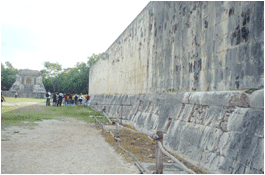 |
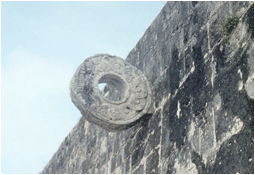 |
The game itself involved two teams, each able to hit the ball only with elbows, wrists or hips, and the object was to knock the ball through one of the stone hoops on the walls of the court. |
In the carvings on the lower wall of the court there are clear depictions of one team member with blood spurting from his headless neck, whilst another holds the head aloft. Some people think the captain of the losing side was executed by the winner; others suggest that the winners earned an honorable sacrifice. No one knows for sure. It is said that the game was used either as a method of settling disputes, or as an offering to the gods, perhaps in times of drought. Only the best were selected to play, and to be sacrificed in this way was a great honor.
| 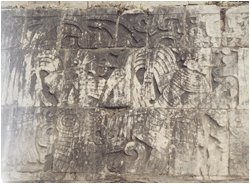 |
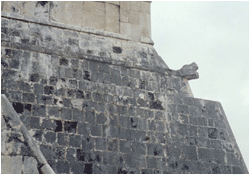 |
Temple of the Jaguars and the Tzompantli |
It is believed that the Tzompantli (a Toltec word) was the platform used for the sacrifices resulting from the ball game. | 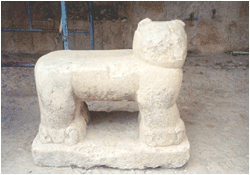 |
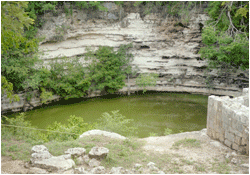 |
Sacred Cenote |
Temple of the Warriors-Group of the Thousand Columns | 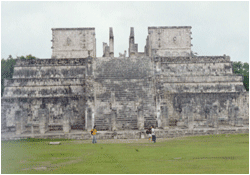 |
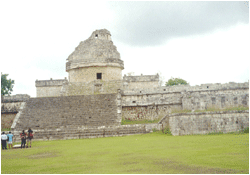 |
The Caracol or the Observatory |
Other structures | 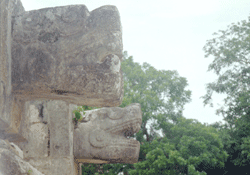 |